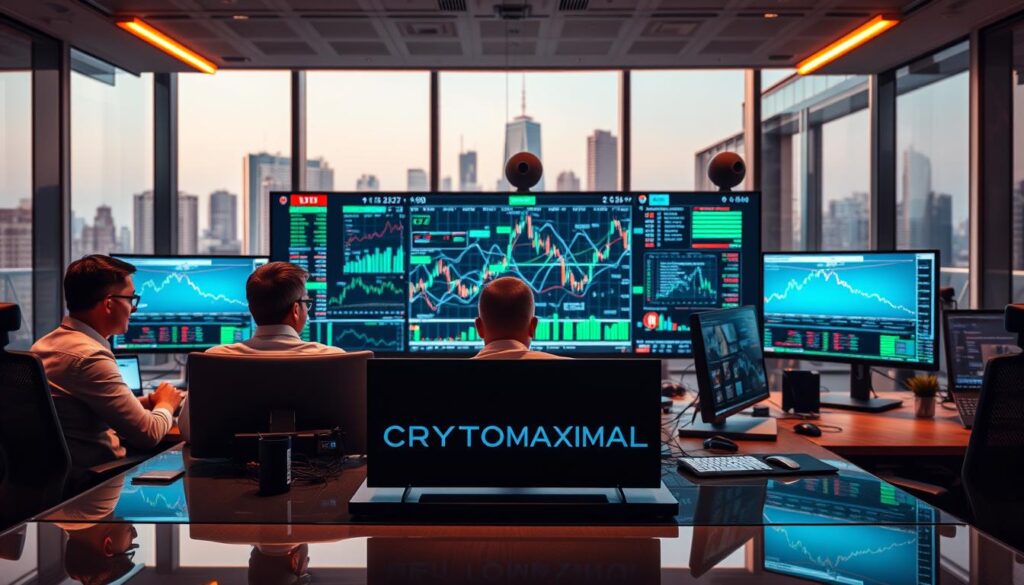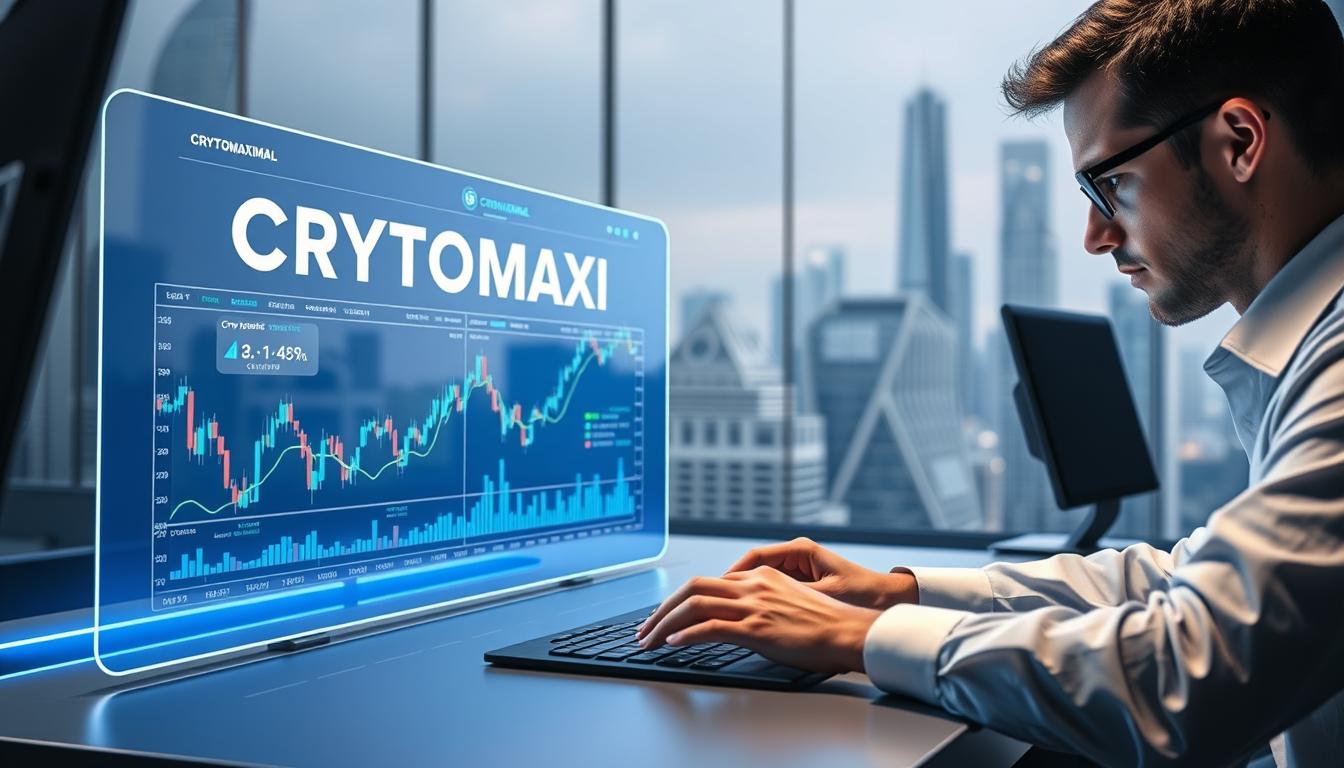Now Reading: Predict the AI Cryptocurrency Market: A Comprehensive Guide
- 01
Predict the AI Cryptocurrency Market: A Comprehensive Guide
Predict the AI Cryptocurrency Market: A Comprehensive Guide

The digital asset landscape is evolving rapidly, and advanced tools are playing a transformative role in analyzing trends. These innovations combine speed, data processing, and pattern recognition to provide actionable insights. However, challenges like volatility and the need for risk management remain significant hurdles.
Platforms such as Bybit Aurora AI, CryptoHawk.ai, and Token Metrics are leading the way. They leverage machine learning to enhance trading strategies and improve decision-making. Hybrid models, which blend automation with human oversight, are also gaining traction for their balanced approach.
This guide explores how these tools and strategies can help you navigate the complexities of the digital asset space. Stay ahead by understanding the latest trends and leveraging the right resources.
Understanding the AI Cryptocurrency Market Prediction
The integration of advanced technologies is reshaping how traders approach digital assets. By leveraging machine learning models, these tools analyze vast amounts of data to identify patterns and trends. This process enables more accurate predictions and informed decision-making.
What is AI Cryptocurrency Market Prediction?
AI prediction involves using learning models to process historical and real-time data. These models can analyze millions of transactions per second, providing insights into crypto price movements. Additionally, natural language processing (NLP) evaluates market sentiment from social media platforms in real-time.
Why AI is Crucial in Crypto Trading
AI offers significant advantages in crypto trading. It can make decisions up to 400% faster than humans, enabling traders to act swiftly. Automation tools, like grid trading, handle over 50,000 orders daily, ensuring efficiency. NLP also plays a vital role by parsing millions of social posts hourly to detect sentiment shifts.
Traditional risk management systems often fall short in volatile markets. In contrast, AI-enhanced systems provide a more robust approach. By combining speed, accuracy, and automation, AI is transforming trading strategies and helping traders navigate the complexities of digital assets.
Key Tools for AI Cryptocurrency Market Prediction
Innovative tools are revolutionizing how traders analyze and predict trends in the digital space. These platforms combine advanced analytics and real-time data processing to provide actionable insights. Whether you’re a beginner or an experienced trader, leveraging the right tools can significantly enhance your trading strategies.

Bybit Aurora AI
Bybit Aurora AI stands out for its real-time API integration, allowing traders to access live data seamlessly. This platform is designed to identify price patterns and execute trades with precision. Its hybrid approach combines automation with human oversight, ensuring a balanced strategy for volatile markets.
CryptoHawk.ai
CryptoHawk.ai offers multi-timeframe alerts, helping traders stay ahead of market movements. Its “Hawk Eye” feature boasts an impressive 87% forecast accuracy. Additionally, users can explore its 14-day free trial, which includes $100K in simulated trading to test strategies risk-free.
Token Metrics
Token Metrics excels with its 12-factor rating system for altcoins, providing a comprehensive evaluation of potential investments. In 2023 tests, its portfolio optimizer increased returns by 34%. This platform is ideal for traders seeking data-driven insights to maximize their gains.
These tools are transforming the way traders approach the digital asset space. By leveraging their unique features, you can enhance your decision-making and stay ahead in the ever-evolving world of trading.
Techniques for Predicting the AI Cryptocurrency Market
Modern technologies are transforming how traders analyze and predict digital asset trends. These techniques combine advanced algorithms and historical data to provide actionable insights. Whether you’re a beginner or an expert, understanding these methods can enhance your trading strategies.
Machine Learning Models
Machine learning models are at the forefront of trend analysis. For example, LSTM networks have achieved 93% accuracy in 24-hour BTC forecasts. These models analyze price movements and identify patterns to predict future trends.
Neural ensembles have also shown impressive results, delivering 1,640% returns in BTC tests from 2018 to 2024. Such models leverage vast amounts of historical data to make informed decisions. Platforms like machine learning models are leading the way in this space.
Natural Language Processing (NLP)
NLP plays a crucial role in understanding social sentiment. Studies show a 0.89 correlation between Twitter sentiment and ETH price. Transformer models reduce drawdowns by 62% by integrating sentiment analysis into trading strategies.
This technology parses millions of social media posts hourly, providing real-time insights into market trends. By understanding public sentiment, traders can make more informed decisions.
Algorithmic Trading
Algorithmic trading offers unmatched speed and efficiency. With execution latencies as low as 0.0007 seconds, traders can capitalize on price movements instantly. Tools like 3Commas automate 78% of trade management, ensuring consistent performance.
Comparing SVM and Random Forest models reveals their effectiveness in altcoin markets. These algorithms process vast datasets to optimize trading strategies. By leveraging automation, traders can focus on higher-level decision-making.
Strategies for Successful AI Cryptocurrency Market Prediction
Effective strategies are essential for navigating the complexities of digital asset trading. By combining advanced tools and proven techniques, traders can enhance their decision-making and achieve better results. Below, we explore three key approaches: grid trading, sentiment analysis, and risk management.

Grid Trading
Grid trading is a powerful method for managing volatility. In 2023, this strategy yielded a 22% APR despite Bitcoin’s 54% price swings. To optimize performance, set grid intervals between 5-7% for high-volatility assets. This approach ensures consistent returns even in fluctuating market conditions.
Platforms like AlgosOne automate stop-loss and take-profit orders, preventing 92% of emotional trading errors. By leveraging automation, traders can focus on refining their strategies rather than micromanaging trades.
Sentiment Analysis
Sentiment analysis provides real-time insights into public opinion. Tools like LunarCrush’s AltRank™ score assets based on social media activity, helping traders identify emerging trends. Studies show a strong correlation between sentiment shifts and price movements, making this technique invaluable.
For example, transformer models reduce drawdowns by 62% by integrating sentiment data into trading algorithms. By understanding public sentiment, traders can make more informed decisions and capitalize on market opportunities.
Risk Management
Effective risk management is crucial for long-term success. Position sizing algorithms can demonstrate 3:1 risk-reward ratios, ensuring balanced trades. Backtest results show a 63% win rate when combining RSI and MACD indicators, highlighting the importance of data-driven strategies.
Additionally, cold wallet integration secures 98% of assets, protecting them from potential breaches. By prioritizing security and discipline, traders can minimize losses and maximize gains.
These strategies—grid trading, sentiment analysis, and risk management—are essential for navigating the dynamic world of digital assets. By implementing these techniques, traders can improve their performance and achieve their financial goals.
Benefits of Using AI in Cryptocurrency Trading
The use of cutting-edge technologies is transforming the way traders analyze and act on market trends. These tools offer significant advantages, from faster decision-making to enhanced accuracy. Below, we explore the key benefits that make these technologies indispensable in the digital asset space.
Speed and Efficiency
One of the most notable advantages is the speed and efficiency these tools provide. For instance, automated systems can execute trades in as little as 0.003 seconds, compared to 2.7 seconds for manual entry. This rapid execution allows traders to capitalize on price movements instantly.
Platforms like ASCN have demonstrated a 400% faster arbitrage detection rate compared to human traders. This efficiency ensures that opportunities are not missed, even in highly volatile conditions.
Data Processing Capabilities
Another critical benefit is the data processing capabilities of these tools. They can analyze up to 1.2 petabytes of data daily, far exceeding human capacity. This ability to process vast amounts of information enables more accurate analytics and better-informed decisions.
For example, a $50K portfolio grew by 47% using AI-only decisions, showcasing the power of data-driven strategies. By leveraging these capabilities, traders can stay ahead of the curve.
Emotionless Trading
Perhaps the most significant advantage is emotionless trading. Studies show that emotion-free systems reduce errors by 81%, ensuring more consistent performance. During the 2022 LUNA crash, algorithmic systems outperformed emotional traders, highlighting the importance of this approach.
Additionally, these tools monitor 94 exchanges simultaneously, providing 24/7 coverage. This constant vigilance ensures that traders never miss critical market movements.
For more insights on how sentiment impacts trading, check out our guide on cryptocurrency market sentiment analysis.
Limitations and Challenges of AI in Crypto Trading
While advanced tools have transformed trading, they are not without limitations and challenges. From data gaps to unexpected outages, these issues can impact performance and reliability. Understanding these hurdles is crucial for making informed decisions.

Data Dependency
One major challenge is data dependency. Many systems rely on incomplete datasets, which can lead to inaccurate predictions. For example, 38% of dark pool data is missing in retail tools, creating gaps in analysis.
The 2021 SQUID coin spoofing incident highlighted this issue. Systems were fooled due to insufficient data verification. Hybrid verification systems, like the AlgosOne model, are emerging as solutions to address these gaps.
Market Volatility
Market volatility poses another significant risk. During Fed announcements, GPT-4 saw a 23% performance drop compared to human traders. Such fluctuations can disrupt even the most advanced models.
MEV attacks, which drain 0.39% of ETH transactions daily, further complicate matters. These attacks exploit volatility, making it harder for systems to maintain consistent performance.
Technological Failures
Technological failures are another critical concern. In 2023, 14% of models failed during SEC regulation shifts. These failures can lead to significant losses and frozen trades.
The AWS outage in November 2023 froze $420M in trades, highlighting the risks of relying on centralized systems. Ensuring robust infrastructure and backup plans is essential to mitigate these risks.
By addressing these challenges, traders can better navigate the complexities of the digital asset space. Hybrid systems and improved data verification are key to overcoming these hurdles.
Future Trends in AI Cryptocurrency Market Prediction
The future of digital asset analysis is being shaped by emerging technologies and evolving strategies. From hybrid systems to quantum-resistant algorithms, the landscape is rapidly advancing. These innovations are not only improving accuracy but also addressing regulatory and privacy concerns.
Hybrid Systems
Hybrid models are gaining traction as they combine automation with human oversight. According to JPMorgan, 77% of hedge funds plan to adopt these systems by 2026. This approach ensures a balanced strategy, leveraging the speed of algorithms and the intuition of experienced traders.
For example, federated learning is emerging as a privacy-preserving solution. It allows data to be analyzed locally, reducing the risk of breaches. This method is particularly useful in sensitive environments where regulatory impacts are a concern.
Advancements in Machine Learning
Machine learning is evolving to tackle complex challenges. Quantum-resistant algorithms are predicted to become standard by 2027, ensuring security against future threats. GPT-5, for instance, shows potential for 93% accurate narrative analysis, enhancing decision-making in trading.
These advancements are not just about speed but also about depth. By analyzing vast datasets, these models can identify subtle trends that were previously undetectable. This capability is transforming how traders approach the digital asset space.
Regulatory Impacts
Regulations are playing a significant role in shaping the future of digital asset analysis. The EU’s MiCA framework requires 23 new compliance parameters for automated traders. Similarly, Dubai’s 2024 trading license requirements emphasize transparency and accountability.
ASIC has proposed a 0.2% transaction tax on automated trades, which could impact strategies. While these regulations add complexity, they also promote a safer and more reliable environment for traders.
As the digital asset space continues to evolve, staying informed about these trends is crucial. By adopting hybrid systems, leveraging advanced algorithms, and understanding regulatory frameworks, traders can navigate this dynamic landscape with confidence.
Taking the Next Step in AI Cryptocurrency Market Prediction
Navigating the digital trading space requires the right tools and strategies. For beginners, starting with CryptoHawk.ai’s free tier is a practical way to explore actionable insights without upfront costs. This platform offers a risk-free introduction to analyzing market trends.
For more advanced users, AlgosOne stands out with its $300 minimum investment and claims of a 1.2% daily yield. Its automated systems are designed to enhance risk management and maximize returns. To get started, connect your API keys to platforms like 3Commas for seamless integration and efficient trading.
However, avoid the “set-and-forget” mentality. Studies show a 79% failure rate for unattended strategies. Instead, actively monitor and adjust your approach. For enhanced analytics, consider ASCN’s 50% bonus (code ASCN50) to elevate your trading game.
FAQ
What is AI Cryptocurrency Market Prediction?
It’s the use of artificial intelligence to analyze trends, patterns, and data to forecast price movements in the crypto space.
Why is AI important in crypto trading?
AI processes massive amounts of data quickly, identifies patterns, and provides actionable insights, helping traders make informed decisions.
What tools are used for AI-driven crypto predictions?
Popular tools include Bybit Aurora AI, CryptoHawk.ai, and Token Metrics, which leverage machine learning and analytics for price forecasts.
How do machine learning models help in crypto trading?
These models analyze historical data, detect trends, and predict future price movements, improving trading strategies.
What is grid trading in crypto?
Grid trading involves placing buy and sell orders at predefined intervals to capitalize on market volatility.
How does sentiment analysis impact trading?
It evaluates social media and news to gauge market sentiment, helping traders understand potential price shifts.
What are the benefits of using AI in trading?
AI offers speed, efficiency, and emotionless decision-making, reducing human error and enhancing performance.
What challenges does AI face in crypto trading?
Challenges include dependency on data quality, market volatility, and potential technological failures.
What are future trends in AI-driven crypto predictions?
Hybrid models, advancements in machine learning, and regulatory changes are expected to shape the future of this field.















